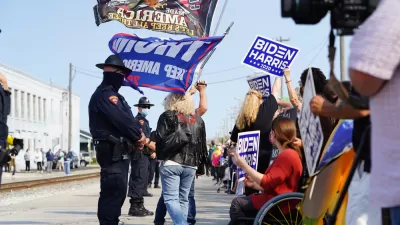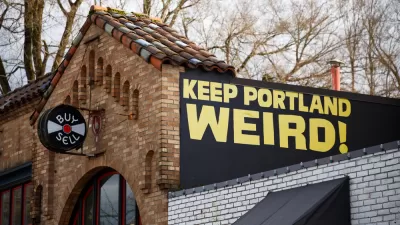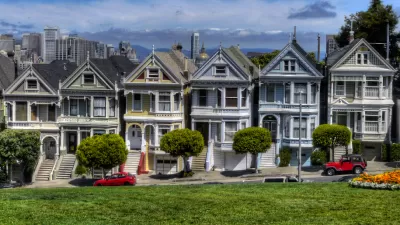Despite the intentions of the nation's fair housing laws, neighborhoods in the United States continue to segregate by race.

William H. Frey examines contemporary neighborhood residential segregation, using Census Bureau American Community Survey data from the 2015-2019.
According to Frey, the data show that "despite the fact that people of color account for the vast majority of recent U.S. population growth, white residents almost everywhere— including those in the nation’s most diverse metropolitan areas—continue to reside in mostly white neighborhoods."
And while neighborhood segregation has declined since the 1960s ("albeit modestly," writes Frey), "substantial levels of neighborhood segregation persist for Black residents and—to a sizable, though lesser extent—for Latino or Hispanic and Asian Americans."
Put another way: "Just as white neighborhoods continue to remain 'whiter' than their surrounding metropolitan areas, it’s also the case that neighborhoods where the average Black, Latino or Hispanic, and Asian American populations reside continue to include overrepresentations of those groups."
The source article includes a lot more data, analysis, and infographics.
FULL STORY: Neighborhood segregation persists for Black, Latino or Hispanic, and Asian Americans

Planetizen Federal Action Tracker
A weekly monitor of how Trump’s orders and actions are impacting planners and planning in America.

Congressman Proposes Bill to Rename DC Metro “Trump Train”
The Make Autorail Great Again Act would withhold federal funding to the system until the Washington Metropolitan Area Transit Authority (WMATA), rebrands as the Washington Metropolitan Authority for Greater Access (WMAGA).

DARTSpace Platform Streamlines Dallas TOD Application Process
The Dallas transit agency hopes a shorter permitting timeline will boost transit-oriented development around rail stations.

Renters Now Outnumber Homeowners in Over 200 US Suburbs
High housing costs in city centers and the new-found flexibility offered by remote work are pushing more renters to suburban areas.

The Tiny, Adorable $7,000 Car Turning Japan Onto EVs
The single seat Mibot charges from a regular plug as quickly as an iPad, and is about half the price of an average EV.

Supreme Court Ruling in Pipeline Case Guts Federal Environmental Law
The decision limits the scope of a federal law that mandates extensive environmental impact reviews of energy, infrastructure, and transportation projects.
Urban Design for Planners 1: Software Tools
This six-course series explores essential urban design concepts using open source software and equips planners with the tools they need to participate fully in the urban design process.
Planning for Universal Design
Learn the tools for implementing Universal Design in planning regulations.
Municipality of Princeton
Roanoke Valley-Alleghany Regional Commission
City of Mt Shasta
City of Camden Redevelopment Agency
City of Astoria
Transportation Research & Education Center (TREC) at Portland State University
US High Speed Rail Association
City of Camden Redevelopment Agency
Municipality of Princeton (NJ)





























